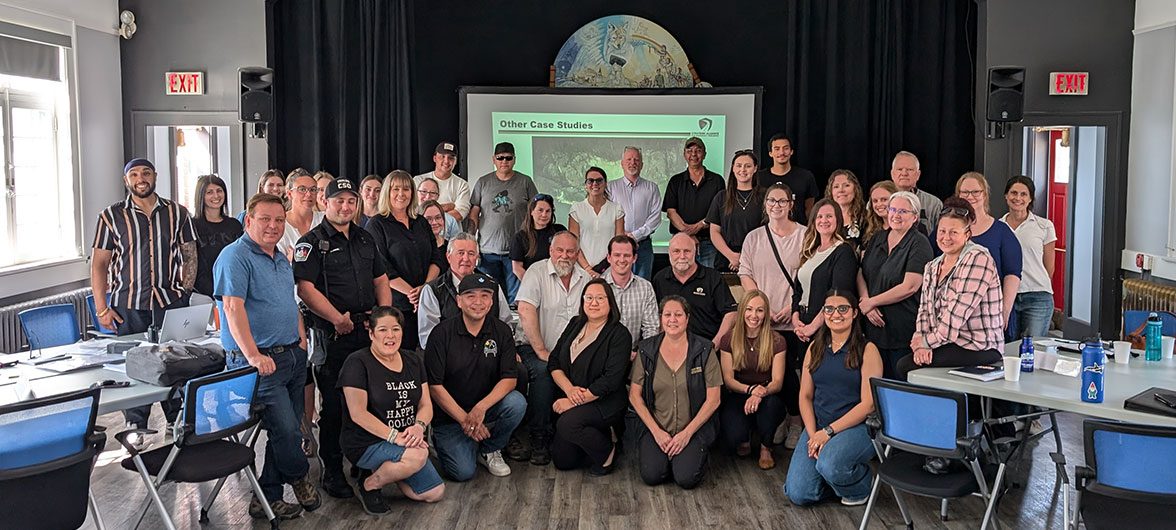
When it comes to emergencies, working together isn’t optional—it’s essential. Emergency response teams from across Kamloops came together in June for a three-day, high-intensity Emergency Operations Centre functional training exercise. The scenario of a fast-moving wildfire threatening multiple areas around Kamloops was fictional, but the coordination, pressure, and decision making were very real.
Team members from the City of Kamloops, Tḱemlúps te Secwépemc, the Thompson-Nicola Regional District, the Ministry of Emergency Management and Climate Readiness, Interior Health, and Thompson Rivers University to strengthen inter-agency coordination, build confidence in Emergency Operations Centre roles, and prepare for the realities of wildfire season.
The training began with two days of foundational Emergency Operations Centre instruction at the Tḱemlúps te Secwépemc Chief Louis Centre Assembly Hall.
On June 5, the scenario was set in real time, simulating grassfires erupting at Paul Lake and Mount Dufferin. These incidents triggered phased evacuations and a cascade of real-time challenges. The City of Kamloops Emergency Operations Centre quickly ramped up, becoming the hub of coordination and critical decision making.
The first hour of the simulation was designed to feel chaotic, mirroring the early moments of a real emergency. As the exercise progressed, teams shifted into a more structured, strategic response, reinforcing the Emergency Operations Centre’s role in staying ahead of the crisis.
This exercise wasn’t just about testing systems—it was about building them. New staff were trained in their functional roles, leadership was tested under pressure, and agencies practised working together in alignment with the Emergency and Disaster Management Act and the Declaration on the Rights of Indigenous Peoples Act.
Key outcomes of the exercise included:
- improved communication between jurisdictions
- greater clarity in Emergency Operations Centre roles and responsibilities
- increased confidence in managing public messaging
- stronger relationships across agencies
This simulation marks the beginning of a broader commitment to emergency preparedness. Plans are underway to develop more complex simulations, enabling the Emergency Operations Centre team to excel in their functional roles. These exercises will continue to centre on building trust, testing procedures, and preparing for re-entry and recovery even during active response.



